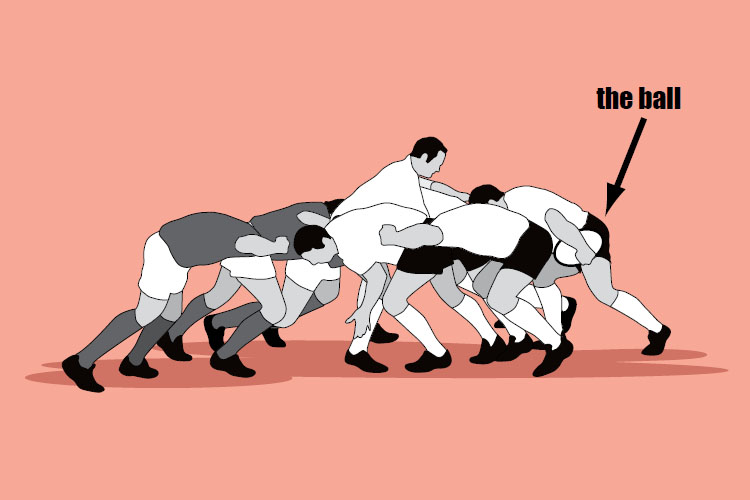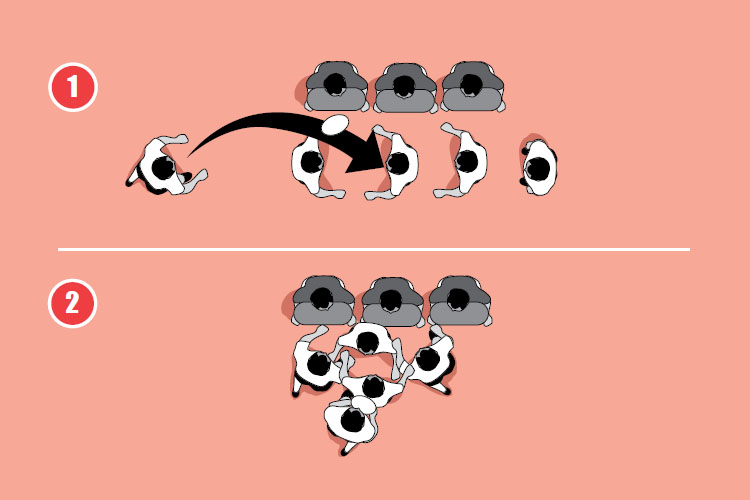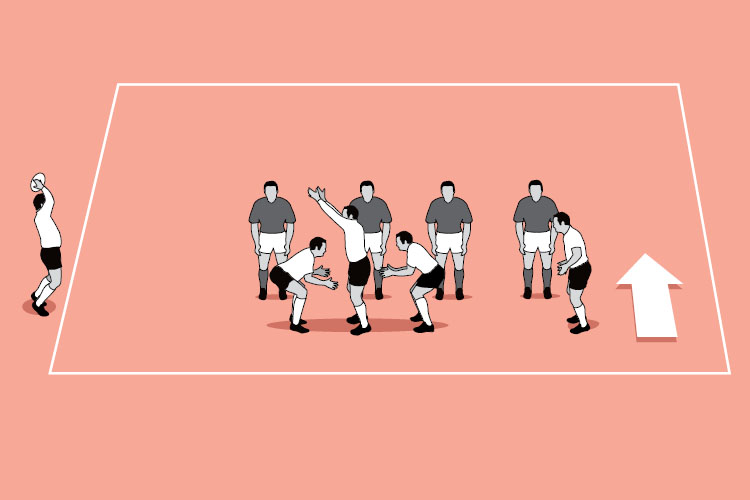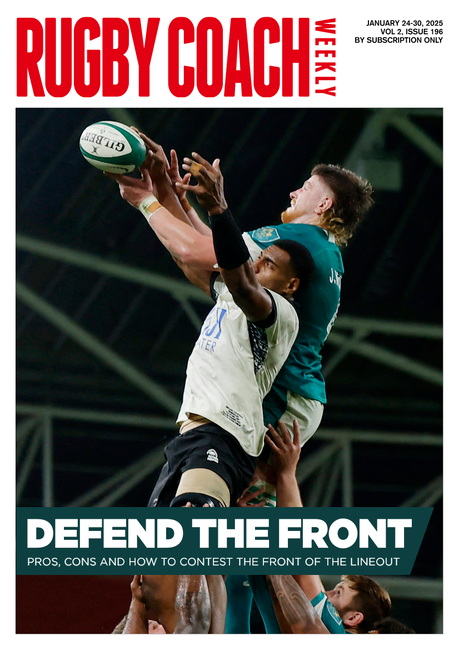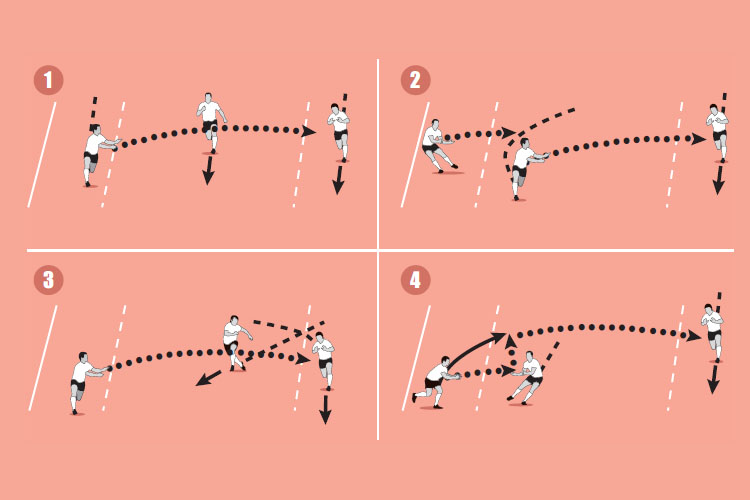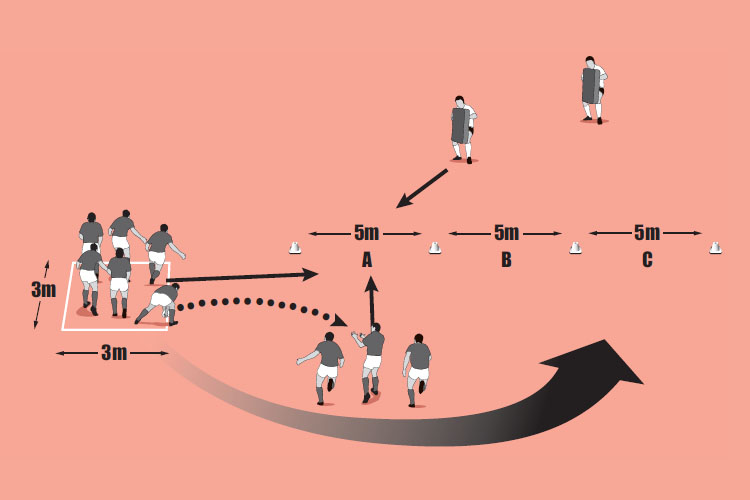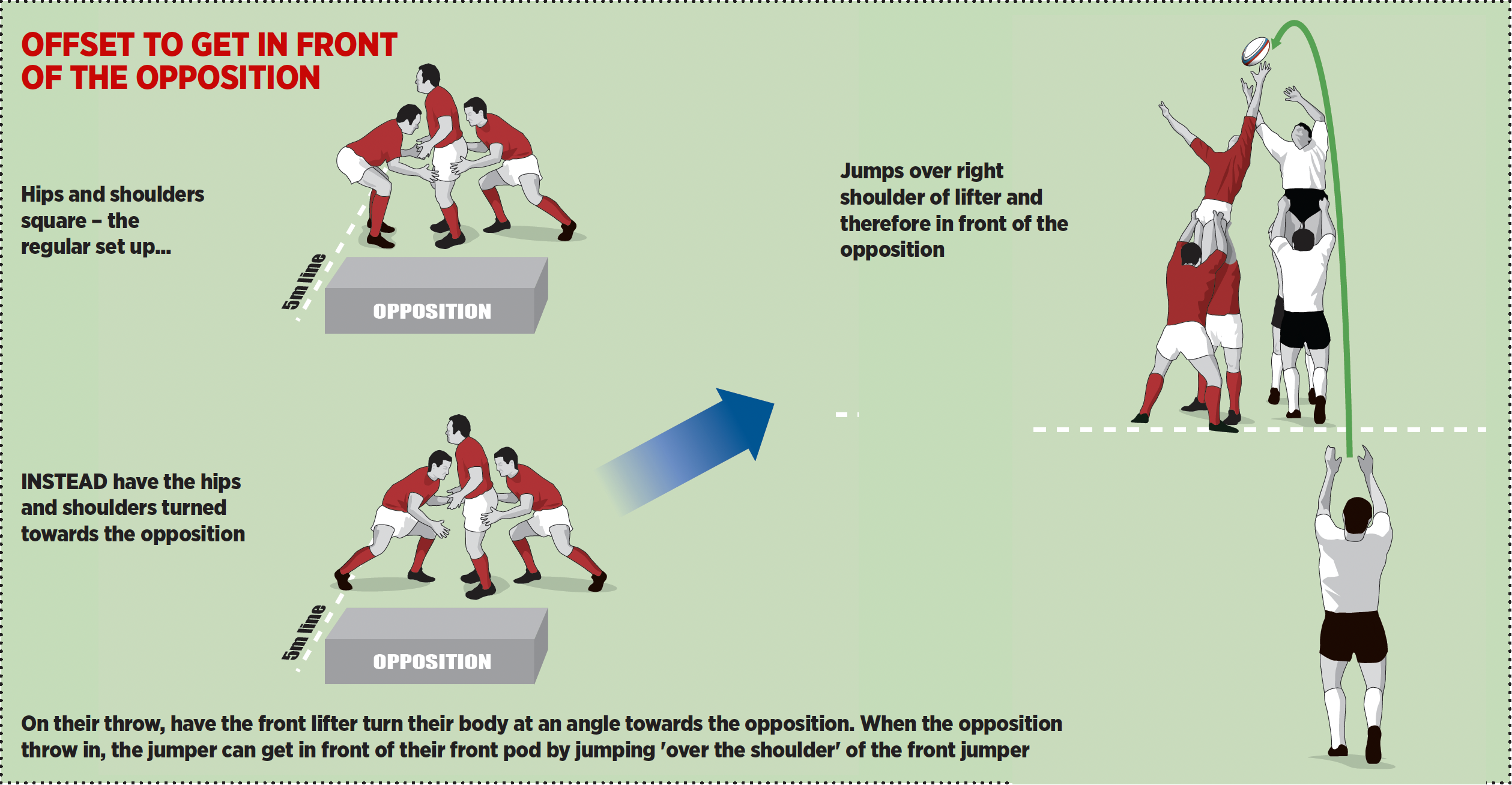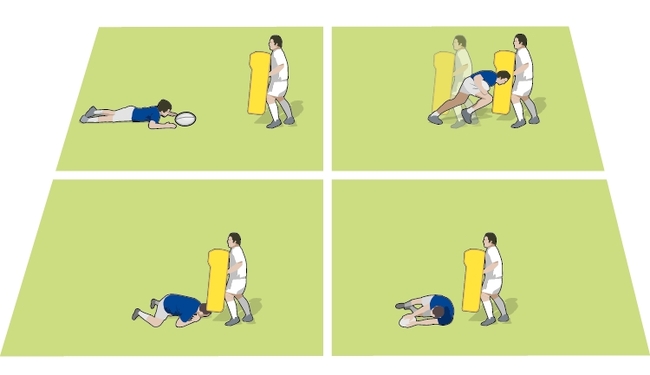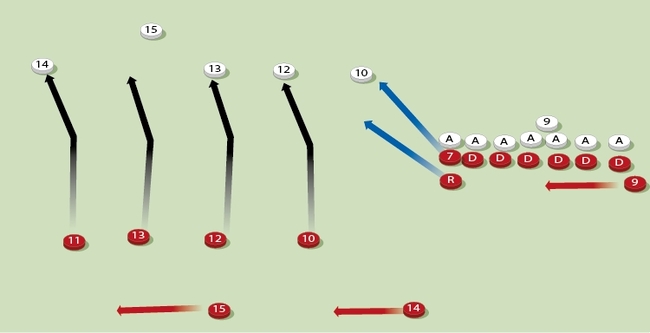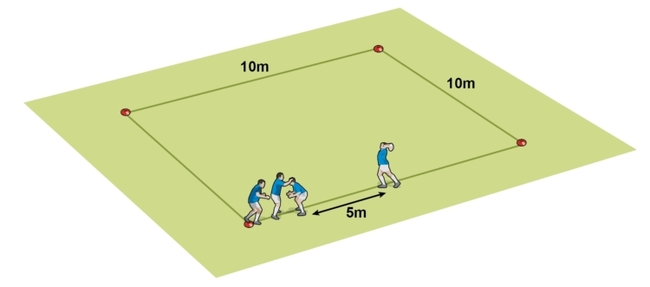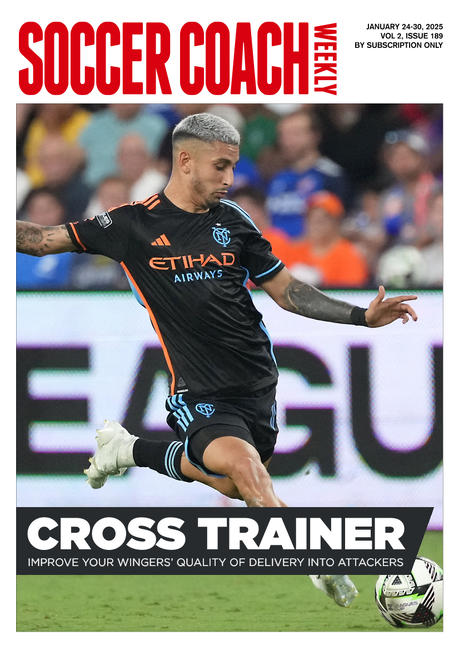Lineout maul
Most mauls are set up from a lineout – the “catch and drive”. The modern lineout maul is not immediately driven as soon as the jumper touches down with the ball. The attacking players use a catch-set-ready-drive sequence from the lineout to build the best base for the maul.
Warm up time: 5-7
Session time: 10-15
Development time: 10-15
Game time: 10-15
Warm down time: 5-7
What to think about
To create a secure maul from the lineout, the ball should be caught cleanly and the maul set up before the drive. Otherwise the maul quickly becomes unstable and easy to disrupt. When the lineout jumper lands with the ball, he can be pulled down by his opposite number. In reality this can be before his feet touch the ground, despite the best intentions of the referee. The player who is supporting behind the jumper should act as a further barrier and blocker to reduce this danger. The supporter turns the jumper in the air, getting his body between the opposition and the jumper as he comes down. He should “bring down” the jumper as he would normally, though this technique is often forgotten in the effort to win the jump in the first place.set-up
- Jumper: Bring the ball down and turn with your back to the opposition. Direct the set up of the maul.
- First supporter: Rip the ball off the jumper, and transfer it to your back hip. Drive forward with the shoulders and hips square.
- Next two supporters: Drive over the first supporter on either side to create a wedge.
- Last supporter: Take the ball off the hip of the first supporter and bind on to create a “T” shape.
- Once set, drive forward.
What you get your players to do
Stand four players in a lineout formation with another player 3m away with a ball. Place three ruck pad holders opposite this lineout. Get the ball carrier to throw to one of the two middle players. Make the players form a maul in slow motion before driving into the bags. Stop once the group has moved 3m forward.Development
Make the middle player jump for the ball, unsupported and supported.
Take away the pads.
Add in more players to each team.
Overload one side of the defence (for instance get a player to bind on to a pad holder to offer more resistance) so the maul has to move sideways before moving forward.
Related Files
Game situation
Split into 5 attackers and 4 defenders. Set up a lineout at one end of a 15m square, with the front of the lineout only 5m from the near side. Get one of the attackers to throw the ball in. The defence can jump as well or stay on the ground. Using a maul, the attack aims to score over the try line. If stopped, the attack gets one more go, restarting in line with where they were stopped.What to call out
- “Set the maul before moving forward”
- “Spine in line”
- “Drive with short, hard steps”
Newsletter Sign Up
Coaches Testimonials

Gerald Kearney, Downtown Las Vegas Soccer Club

Paul Butler, Florida, USA

Rick Shields, Springboro, USA

Tony Green, Pierrefonds Titans, Quebec, Canada
Subscribe Today
Be a more effective, more successful rugby coach
In a recent survey 89% of subscribers said Rugby Coach Weekly makes them more confident, 91% said Rugby Coach Weekly makes them a more effective coach and 93% said Rugby Coach Weekly makes them more inspired.
Get Weekly Inspiration
All the latest techniques and approaches
Rugby Coach Weekly offers proven and easy to use rugby drills, coaching sessions, practice plans, small-sided games, warm-ups, training tips and advice.
We've been at the cutting edge of rugby coaching since we launched in 2005, creating resources for the grassroots youth coach, following best practice from around the world and insights from the professional game.
